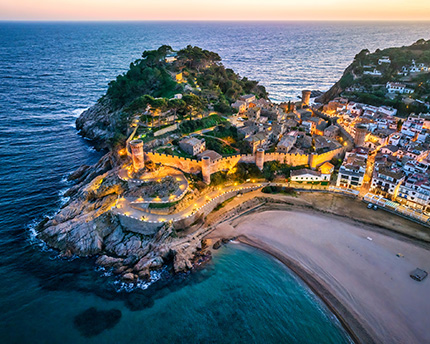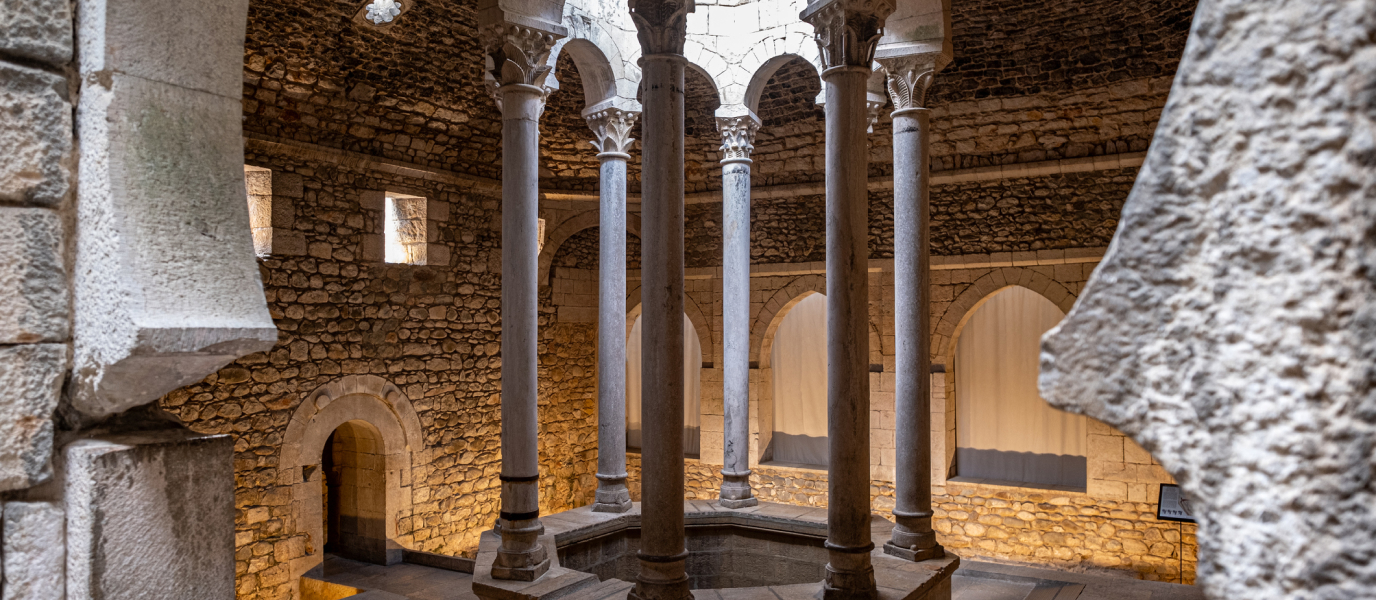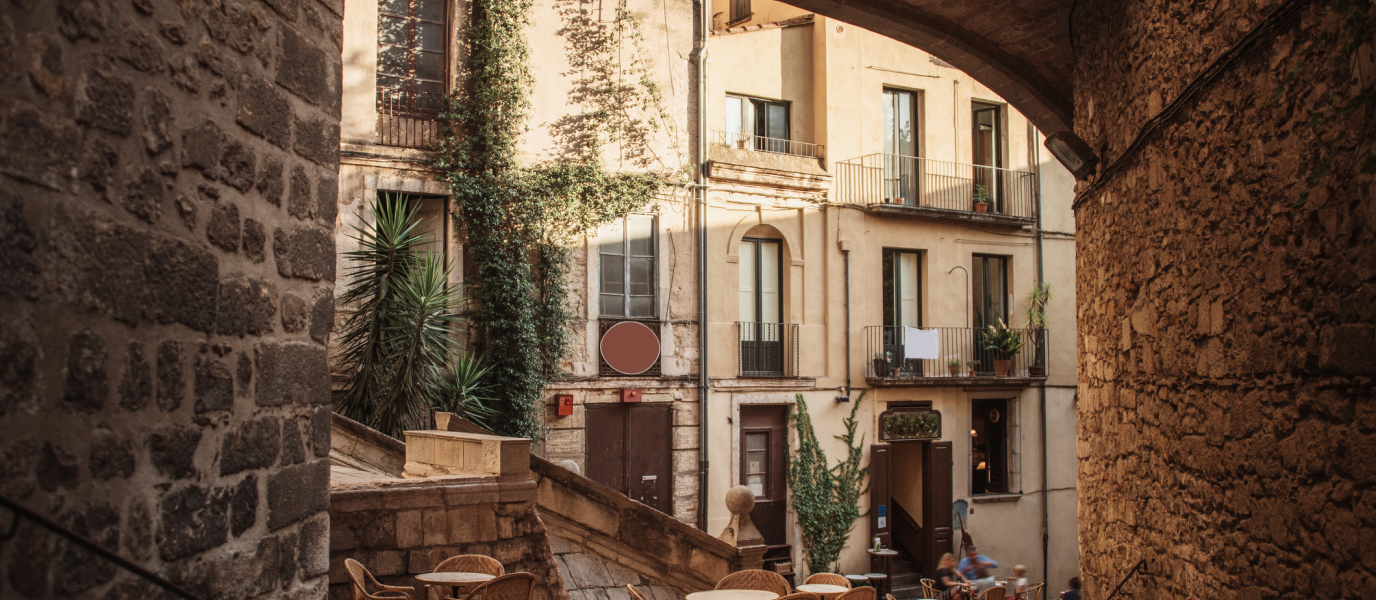Just over half an hour north of Girona, a large Romanesque bridge over the river Fluvià marks the threshold of an extraordinary journey through time. Crossing that great stone walkway means going back in time, to an era of powerful counts and bishops, of palaces and cathedrals, of narrow streets and small squares, of bustling fairs and markets, etc. In other words, visiting Besalú means exploring and enjoying an authentic medieval gem.
Acknowledged as one of the best preserved medieval sites in Catalonia, Besalú is a place full of history, where the traces of Iberians, Romans, Jews and Christians are still evident. You only need to take a stroll through the narrow streets of its old quarter to recognise all the signs reminiscent of a rich past and which, fortunately, are still there to tell us the thousands of stories they have witnessed.
Besalú, a historical crossroads
Marked by the rivers Fluvià to the south and Capellades to the north, Besalú has always been a major crossroads between the north-east of Catalonia and the south of France. It is a bridge between the Costa Brava and the Pyrenees.
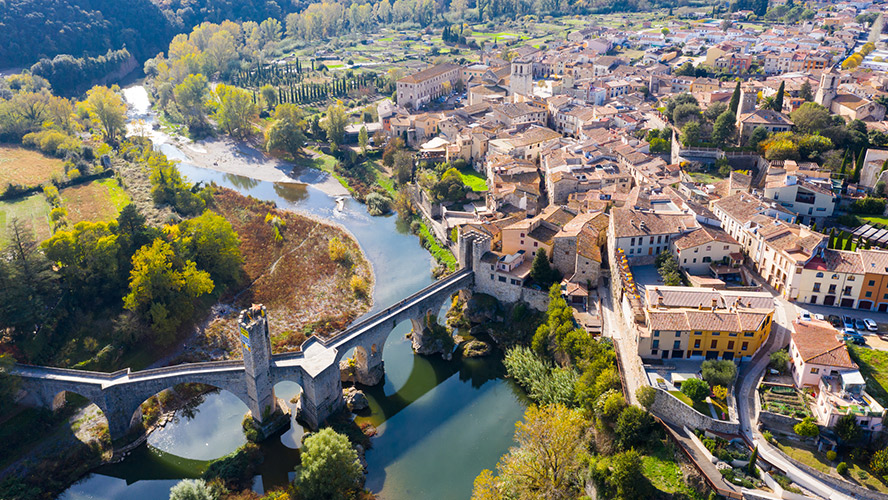
Artisans, farmers and traders made Besalú market one of the biggest in the area, at least from the turn of the millennium until well into the 14th century. Moreover, the town’s prominent role, within the county of Girona first, as a territory on its own later (Besalú county), and finally from 1111 onwards as part of the House of Barcelona, enabled it to have a sizeable architectural heritage which, in 1966, led to the town itself being declared a Cultural Heritage Site in the category of Historical Site.
Things to see in Besalú
Besalú’s old quarter is a true delight for the senses. It is a large stone canvas that tells the story of the La Garrotxa district and, in general, of Catalonia. Strolling through its old cobbled streets opens up an irresistible catalogue of civil and religious buildings that are rooted in time and which emerge splendidly in this day and age.
Pont Vell (Old Bridge)
A symbol of the town, this extraordinary mediaeval bridge over the river Fluvià –Romanesque, dating from the 11th century, although renovated in the 14th century and rebuilt in the 20th century– is the most outstanding feature in Besalú’s historical ensemble. With seven arches and a fortified tower, the Old Bridge anticipates the town’s great overall value and architectural integrity.
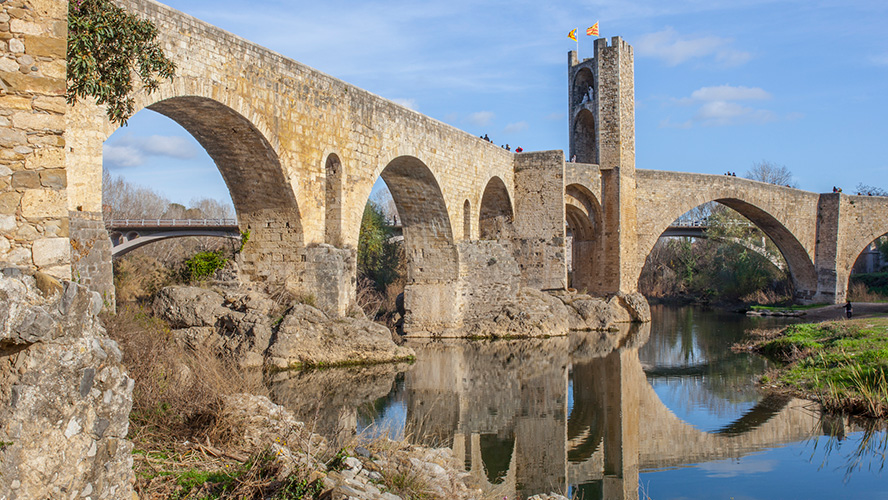
Besalú Castle
This was the original centre of the town, located on the hill that marks the confluence of the rivers Fluvià and Capellades, but practically nothing remains of the old 10th-century count’s castle. Nevertheless, the remains of Saint Mary’s church (11th-century castle church), which became an Augustinian canonical church and, in the 16th century, a collegiate church, still stand on this historical site.
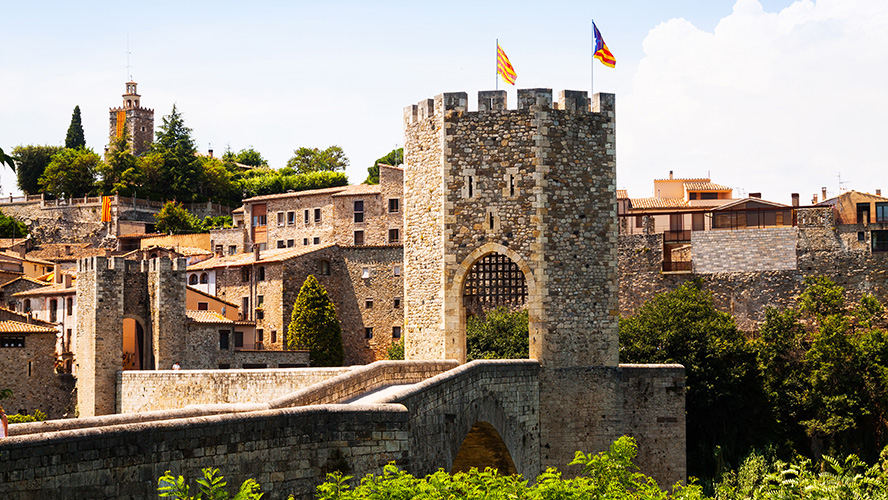
Saint Vincent church
At the foot of the castle hill, this small 12th-century Romanesque church is also one of Besalú’s most outstanding medieval jewels. Inside, in the Gothic chapel dedicated to the True Cross, there is a fragment of the very wood that, according to tradition, was used by the Romans to crucify Jesus of Nazareth.
Monastery church of Saint Peter of Besalú
This sturdy Romanesque church is the only thing still standing from the old Saint Peter’s monastery, founded in 977 by Miró II Bonfill, Count of Besalú and Bishop of Girona. With a basilica floor plan and three naves, where its ambulatory deserves special attention, it is the most prominent church of the three in the town.
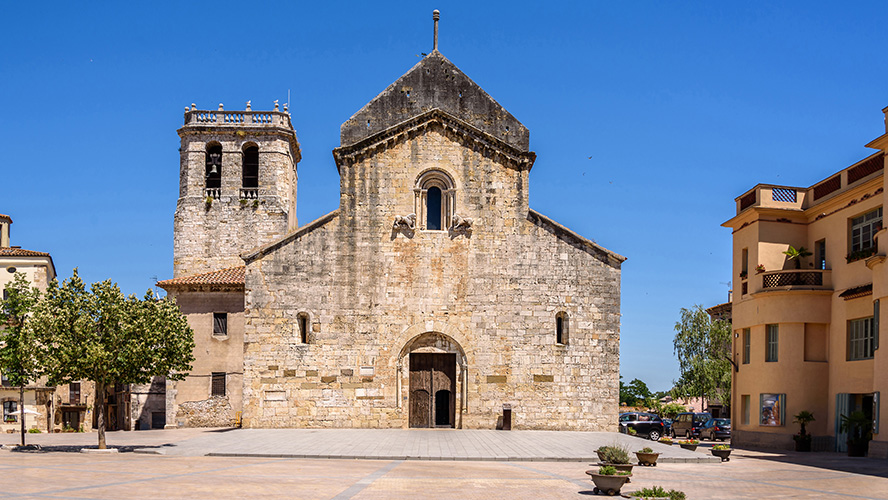
Call Jueu
Besalú’s old Jewish quarter (call in Catalan) is also one of the key pieces in this unique medieval puzzle. Leaving behind the Pont Vell, the streets of Tallaferro and Portalet, the buildings of Casa Astruc and Curia Real, and the Jewish Square, where the old synagogue was located, you can gradually trace the interesting story of the Sephardic community that flourished in the town.
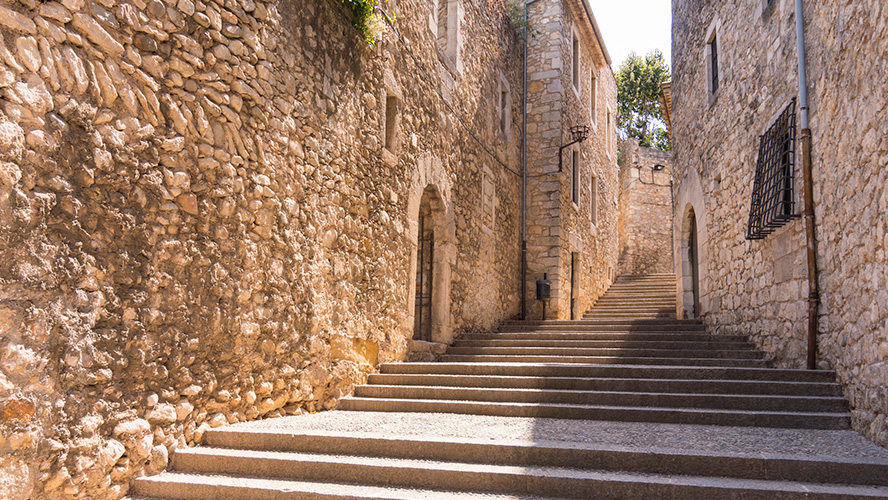
The Mikveh
If the Besalú Jewish quarter is a unique treasure, the jewel in the crown is clearly the Mikveh, an underground ritual bathhouse. This unique 12th-century, typically Romanesque, barrel-vaulted stone house, together with Girona’s Mikveh, is the only Jewish bathhouse discovered to date on the Iberian Peninsula and one of only four that have been preserved in Europe.
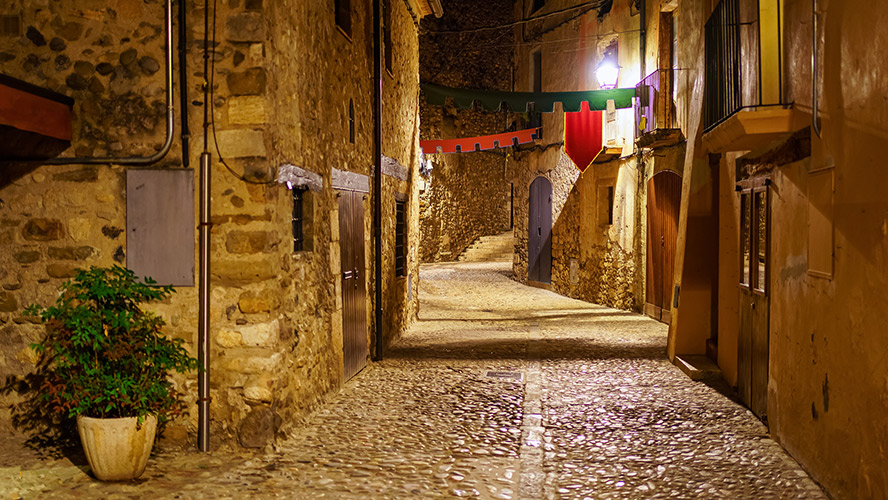
Circusland
Housed in a unique mid-20th century rationalist building in a section of the former Benedictine convent of Saint Peter, next to the church, this extraordinary museum is dedicated entirely to the past, present and future of circus arts. Also known as the International Circus Palace, it houses one of the largest circus-related collections in the world.
Things to see near Besalú
This medieval gem in Girona province provides all kinds of experiences but, if you also want to supplement them with other options in the area, start by immersing yourself in the marvellous Garrotxa Nature Reserve. This Protected Natural Area is the best example of volcanic landscape on the Iberian Peninsula and is one of the most outstanding in Europe. Inside the nature reserve, there are routes for visiting the area’s 38 most iconic volcanic cones and the more than 20 basaltic lava flows, as well as the charming Fageda d’en Jordà (Jordà beech forest). There are several information centres and museum spaces that invite you to discover this natural treasure in depth.
The rich historical and architectural heritage of the area around Besalú also invites you to visit places such as the 12th century Holy Sepulchre of Palera and one of the 9 Romanesque hermitages in the eastern part of La Garrotxa. The Sant Ferriol Sanctuary, another historical jewel, is also located near the right bank of the river Fluvià. The spectacular Llierca Bridge, also Romanesque, built between 1345 and 1346, is well worth a visit. The ancient monastery in Sant Joan les Fonts is also among many other treasures that highlight the richness of this historical territory.
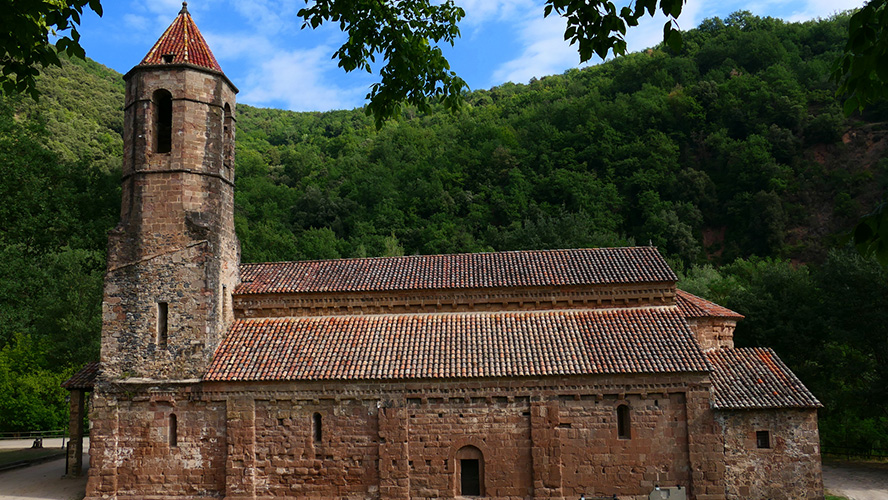
To the west of Besalú (about 20 minutes by car), you can also visit the town of Olot, capital of the La Garrotxa region, with its fantastic old quarter, modernist houses and fabulous cuisine. Further south is the fascinating city of Girona, another historical gem that is certainly worth a visit.
Where to eat in Besalú
Just 40 minutes from Besalú, Hotel Roses Platja, a fantastic 3-star Barceló Group hotel, is the perfect option for a first-class stay on any visit to the province of Girona. Located along the beachfront and with a characteristic colonial style, the hotel has 167 fully equipped rooms. Most of them have fabulous sea views and private terraces. A buffet restaurant, a snack bar, a beautiful garden area with direct access to the beach and a swimming pool with solarium round out the amenities provided by this ideal accommodation so that you can enjoy your holiday with your family or as a couple.
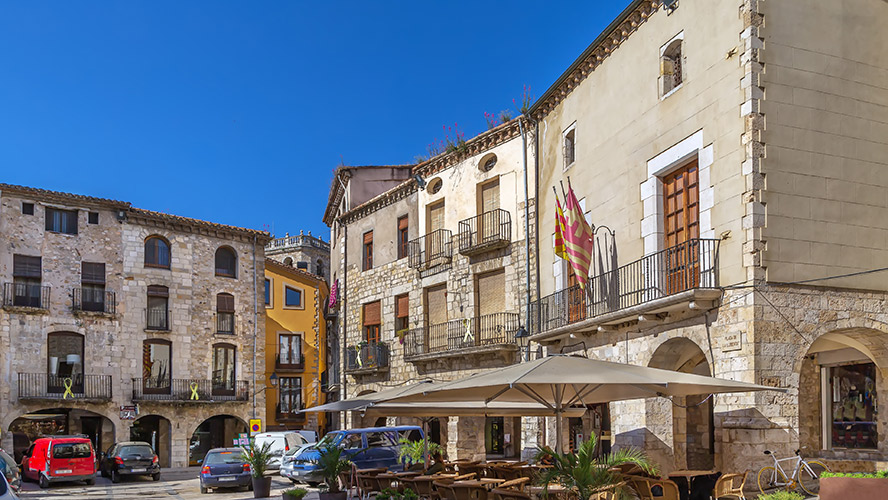
Moreover, the hotel is around 300 metres from the old quarter of Roses and from such interesting attractions as the Ciutadella fortification, Saint Mary’s church and the modernist buildings in the town’s historical centre, among many other options.







































































